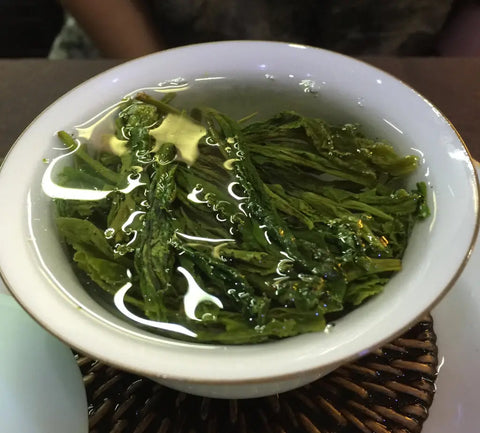
The Tao of Tea: Part Two (Science of Preparing Tea)
In the previous entry, I suggested that one needs a certain kind of playfulness when preparing tea and I encouraged experimentation. In this post, I want to discuss some important variables to take into consideration.
While it’s true that there is no one perfect way to prepare tea, there are variables that we have to consider that will affect our cup of tea. If we fail to think about these things, we risk making an inferior cup of tea. Who wants that?
Essential Tea Variables
Perhaps the four most important things to keep in mind are the following:
- Water quality is equally as important as leave quality - The more neutral the flavor of the water, the more you can taste what the tea has to offer; however, sometimes the interplay between the flavor of the water, the flavor of your clay teaware, and the flavor of the tea is a net positive result. Again, no steadfast laws here; just things to take into consideration.
- Teaware matters - A porous clay can either adversely or positively affect the flavor of your tea. This also holds true if you prepare your tea in metal or plastic. If something tastes “off,” assess your teaware and your water before assuming it’s the tea.
- Control that temperature - Try to use a thermometer, a variable temperature kettle, or be an excellent judge by “feel”. Regardless of how you choose to do it, when you have finely-tuned control over your temperature, it makes a difference.
- Watch the water to tea ratio - You do want to try to find the right balance between the volume of water you use and the amount of tea you prepare. I care less about this on the concentrated end and more about it on the diluted end. Too much water and too little tea is a bad combination, always. About 1 gram / 50 mL (1.7 oz) of water is a good ratio, though I’ve steeped more as well as less with good results.

Want to Take It a Step Further?
Try a scientific approach. A scientific approach doesn’t discourage playfulness in tea preparation; it helps us find a range within which we can discover the best flavors. While I would consider the above four variables essential in finding one’s way with tea, those who are more scientifically inclined might prefer to consider something like the solubility of the tea.
In this case, solubility refers to the tea’s ability to release chemicals into the water, chemicals such as polyphenols, amino acids, enzymes, minerals, and so forth, many of which have been noted for their possible health benefits. One of the polyphenols, tannins, is believed to be primarily responsible for astringent and bitter flavors, and so controlling the release of it might vastly improve the flavor of your tea.
So what’s important?
Mostly three things: time, temperature, and surface area of the tea.
In general, you want to think about these three things:
-
A lower surface area of tea means a higher rate of dissolution (or the release of chemicals) into the water. In layman’s terms, the smaller and more broken leaves release chemicals faster. Tea bags, for example, sometimes have very fine, small tea grains in them, and so it’s little wonder that they become bitter so quickly.
What does this mean? Adjusting in increments of 10-15 seconds, try steeping larger leaves for longer and smaller leaves for shorter amounts of time.
-
Higher temperature means a higher rate of dissolution. This is why preparing Silver Needle white tea at 175°F (80°C) for one minute will give you a different flavor profile from 205°F (95°C) for one minute.
What does this mean? Different chemicals are also released at different rates at different temperatures. If your tea is too astringent, try lowering the temperature by 10-15°F (5°C) next time. If the flavor is too weak or simple, try raising the temperature by 10-15°F (5°C) next time.
-
Longer steeping time means a higher rate of dissolution. Similar to the differences in temperature, preparing your Anji Bai Cha green tea at 180°F (80°C) for one minute will give you a different flavor profile than 180°F (80°C) for three minutes.
What does this mean? More chemicals dissolve into the water over longer periods of time. If you find the flavor of your tea too concentrated, try decreasing the steeping time by 15-30 seconds next time, but if you feel like there’s a flavor note that should be more pronounced, try increasing the steeping time by 15-30 seconds next time.

While understanding tea scientifically doesn’t give us strict parameters to follow in our tea preparation, understanding how tea is prepared at the scientific level can give us some guidelines to follow as we try to find the perfect cup of tea for ourselves.
In the next post, we will be discussing different methods we use to prepare our tea. We don’t pretend that the list is exhaustive or authoritative. Instead, it should be taken as illuminating, and we hope to learn from what you have to offer as well.
